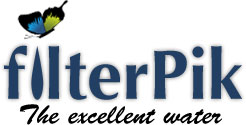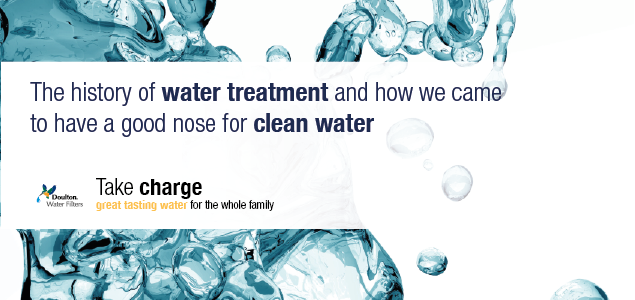For thousands of years water treatment wasn’t a priority. Human communities simply settled and made their homes near to water. It made sense. It was a necessary commodity and the means to carry far were unattainable. The water was heavy and sloshed around, making containers unstable as it was moved from place to place. Setting up home near to a river, lake or mountain stream was common practice and a practical means to an end.
However, ensuring a water supply was present was the easy part … water treatment in those days (and is still often the case now) wasn’t given a second thought. But as time moved on, water quality started to become important and proving that water was drinkable and healthy became a thought-provoking task.

Many generations simply used their eyes and nose to check that their water source was suitable to drink. If it looked clear and it smelled of nothing in particular, then it was deemed drinkable. The final taste test sealed the judgement. If it tasted OK, then everyone drew their water from the same place with little thought as to its safety and no thought about its long term affects.
For thousands of years, water was tested this way and there was little understanding as to why people became sick for no apparent reason.
Early water treatment and filtration systems
It was around 4000 B.C. when water started to be passed through charcoal to make it less cloudy, but societies soon realised that using the human senses just wasn’t good enough to determine the cleanliness of their drinking water.
Methods, such as boiling, straining and exposing to sunlight were tried when water didn’t look clear or it had a bad smell. These tests would have some effect, but it would be many years of using no treatment methods or very basic (and somewhat ineffective) processes to filter their water before more successful techniques were discovered.
It wasn’t until the 1700s that filtration was considered as a possible method of removing unwanted particles from drinking water. Filtering the water through sand became popular and by the 1800s scientists started to understand that it wasn’t just visible particles that were the problem.
As more research was carried out, it became clear that many contaminants were invisible to the naked eye and a better way of filtering the water would be needed.
A major breakthrough in water treatment
It was in the mid- to late- 1800s that scientists made a number of important breakthroughs.
Cholera, a fatal disease, was found to be waterborne and caused by water contaminated with sewerage. As science advanced, the theory of microbial transmission of disease became known, and was linked with being carried by water.
Drinking water systems continued to use a sand filtration method, which reduced water turbidity (cloudiness), but failed to deal with life-threatening microbial bacteria. The race was on to find a new and effective method to deal with the ‘unseen’ dangers in water.
In 1826, our very own Henry Doulton pioneered water filtration and invented the concept of the contemporary ceramic candle water filter after which he was commissioned by Queen Victoria in 1835 and consequently awarded a knighthood in 1887 for his innovative Services to the British Empire.
Another breakthrough came at the turn of the century in the USA. In 1908, it was discovered that chlorine was extremely effective as a water disinfectant and became somewhat of a panacea for all earlier water quality woes.
The impact of industry and technology
Whilst the fields of science and medicine were advancing, so the march of industry took its toll. In the 1960s and 70s, industrial accidents, chemical spillages and leaks, run-off from farms and the expansion of the number of new man-made chemicals and products meant that water sources became under increasing attack from a wide-range of new contaminants … chlorine alone would not be enough.
There was a little good news though. Technological improvements to filtration methods were ongoing, especially with the use of granular carbon and other filter mediums. Research showed that combining different methods was beneficial, and sedimentation (where particles are allowed to fall to the bottom of a tank), filtration through various structures, and chlorination was an effective combination.
Water treatment today
Technological advances have made water treatment highly scientific, and today our water is screened, clarified, filtered, aerated, and disinfected before it reaches our tap.

Filters are still made from the natural raw materials, which were used way back when, but technology has progressed so that new and exciting methods can be used to make them even more effective, accessible and reliable. Filter mediums are finer and can filter more out. Anti-microbial coatings deal with microscopic pathogens, and filtration methods can be adapted to suit the water being treated, its source and its make-up.
Today’s water is clean, healthy and great tasting. It smells good and it looks inviting to drink. To get to you, your water has been on an incredible journey.
Read more about water filtration for your home. Water never tasted so good!






